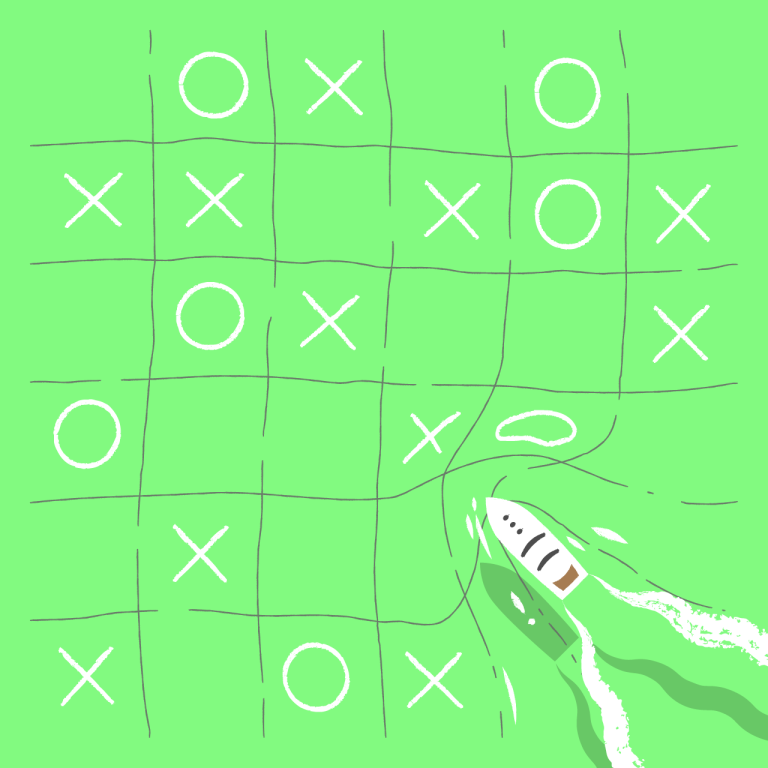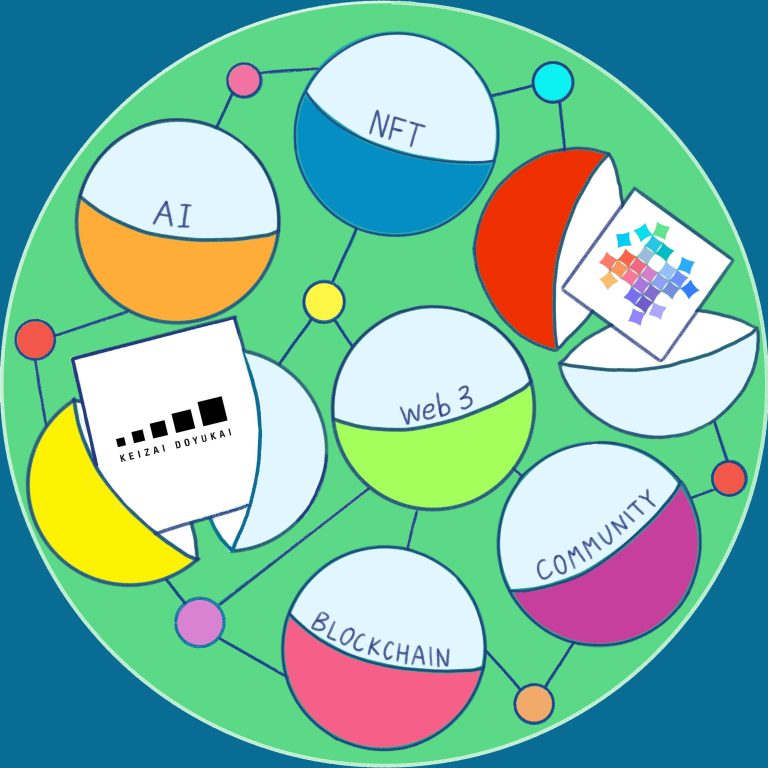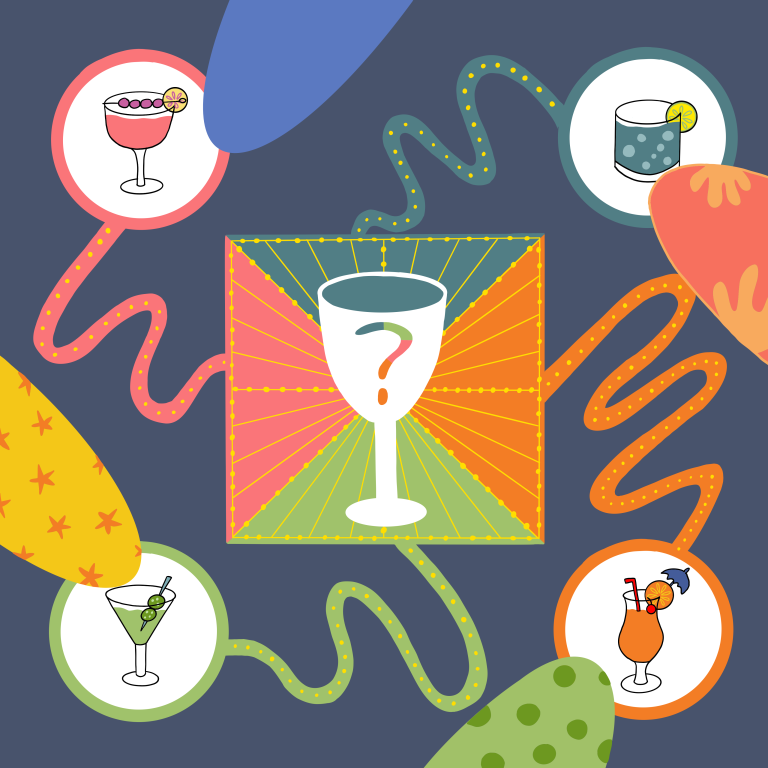Introduction
So far in this series, we’ve covered why DAOs (decentralized autonomous organizations) are useful structures, and how one might go about making a DAO. In this article, we’ll give an in-depth walkthrough of a DAO in action: Akiya Collective.
In brief, Akiya Collective is a response to the akiya (空き家 — “empty homes”) problem currently ongoing in Japan: by 2030, almost one third of all homes in Japan will be vacant. Akiya Collective, a non-profit organization, aims to help revitalize some of these akiya into a decentralized network of residencies and installations, through mutual participation of locals and global citizens. These homes will serve as bridges to local areas, allowing for cultural exchange and rural revitalization to occur in a symbiotic and connected way.
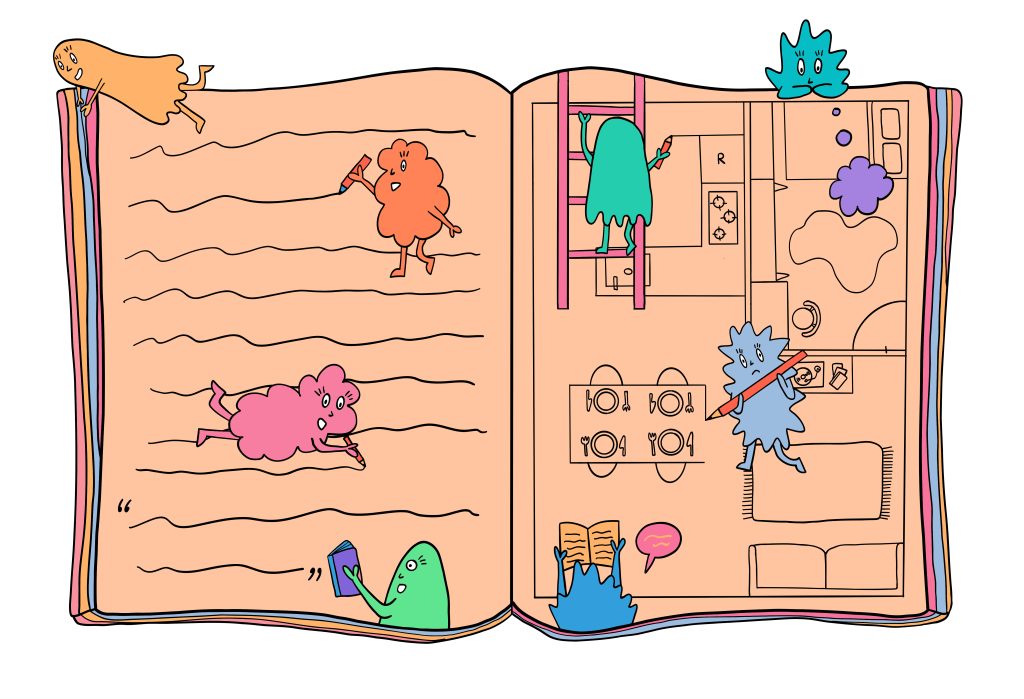
Overview of core offerings
(1) Residencies and Habitat Installations
Akiya Collective hosts residencies where the community works together to build spaces that are in harmony with the local environment. These residencies are sourced, crowdfunded, and created by the community, for the community. The goal is to cultivate a network for people to explore an alternative economy, co-habitate with locals, and create experiential spaces / habitat installations in pursuit of human flourishing.
(2) Open-source Operational Playbook
The residencies and habitat installations will form a positive feedback cycle, where both feed into each other: people will build upon the space, and the space will serve as inspiration to its inhabitants. Over time, the project will develop a proven, repeatable, open-source framework not only for purchasing akiya, but also on how to create a sustainable model for transforming empty spaces into embodied and artful spaces.
How Akiya Collective began (and evolved)
Akiya Collective started out with a dream of doing creative sabbaticals and re-inventing spaces with friends in rural Japan. Compounded with the rise of akiya, there seemed to be an additional draw in investing in a house in Japan. The criteria for purchase was: being in nature, having the space to explore artistic work, having a low cost of living, and being able to change / renovate the space as an embodied and shared canvas for our ideals.
In going through the research and purchase process myself, I realized that buying an akiya came with a lot more logistical challenges than expected. These included finding reputable real estate and legal counsel, acquiring hankos (required for signatures in Japan), building governmental relationships, and more.
A small group of potential future akiya owners formed to share information, and we started documenting our process online as a centralized resource for anyone else who was interested in purchasing an akiya, as no such resource existed. Organically, more people joined, ranging from current akiya-owners who wanted to contribute the learnings from their own journeys, to the akiya-curious who wanted to understand what the process was like. Over time, this community grew to more than 1,000 people.
Due to many potential owners and current owners gathering in the community, the group evolved from just an information source to presenting opportunities for people to find co-owners, or work together on akiya projects. Purchasing an akiya individually was possible, but co-ownership also started to look appealing, as some owners would only be in Japan for part of the year. Any house requires maintenance, and lived-in houses are far more taken care of than empty ones.
When people gather together with a shared objective and mission, it unlocks greater value— on both a social level (local connections in different areas, or living with community), as well as a financial level (finding volunteers, pooling shared resources, bartering of complementary skill sets, and more).
The emergence of a DAO
At the same time, questions started to form around the coordination efforts: how are financial contributions weighted vs time spent renovating or managing the house? What kinds of things should be more incentivized? Further, is it feasible to co-govern and co-operate a house with internet strangers, as usually buying property together requires a much more intimate relationship akin to partnership level?
Many of these questions are similar to how governance takes place in the web3 digital world, especially those relating to rewarding operational vs financial contributions. While the initial goal wasn’t specifically to create a DAO, there were many elements that ported over.

For example, web3 enables:
- new ways for connection + coordination
- preservation of public goods
- sovereignty + collective ownership
- trust + being good neighbors
Thus, in resonating with the ethos of web3 frameworks, experimentation began: ranging from coordinating workstreams and assigning values to tasks, to decentralizing documentation of learnings. During this experimental phase, the collective started raising grant money for this project to test some of these digital assumptions IRL. We received enough capital to activate residencies in different areas, and fund the purchase of the initial home.
It’s important to note that while this project has received much inspiration from web3 frameworks, there are still nuanced decisions that are evaluated on a case-by-case basis. For example, while many DAOs use tokens for governance, the Akiya Collective is an atypical DAO since there are no tokens yet — this community has started off with a coalition of strongly value-aligned people to find those who are genuinely interested, before attracting others who are more financially incentivized. This kind of “slow-growth” community building is especially relevant for projects that exist first and foremost in the physical world, instead of only in digital spaces.
Emphasizing relational-building
Turns out that the logistics around the house purchase process is actually the easy part — and the more difficult challenge is actually integrating well (and being truly welcome) in a community.
It’s possible to find the “perfect” house online – in terms of location, size, cost, and other metrics, it’s arguably more critical to the long-term success of the project to find a community and area that can serve as a local partner and supporter of our efforts. As most of these answers cannot be hypothesized from just online research, it was important to actually spend time exploring these regions in person.
Earlier this year, Akiya Collective ran a series of mini-residencies in rural Japan: to understand more about local cultures, build relationships in the area, and use the rented home as a base to explore additional nearby akiyas (which oftentimes are not listed online). During the second residency in Nagano, a target first community house was found, and the purchase process is currently underway. As people on the ground are key for akiya discovery and renovation, the project has also started to think about different incentive structures for these IRL members as well.
As we go through the purchase process, renovate the house, and learn how to make friends with our new neighbors, we plan to update our open-source playbook along the way. As we encounter new experiences, our members will continuously iterate this living document into a comprehensive guide that makes it much easier for someone else to fulfill their akiya dreams: this will include unlisted akiya in neighborhoods we have a base in, stewards from different areas in our network to act as local ambassadors, as well as financial support like government stipends and grants available per region.
Community synergies
While this project started as a way to compile information to help others navigate the logistical steps in purchasing akiya, the community that has formed around it became the even greater draw. It has already helped members find co-owners, communities to live with, and allowed akiya-curious purchasers some time to sample what it’s like to live in the Japanese countryside via residencies.
In the future, this network can also be leveraged as a vehicle for crowdfunding for renovations. Need vetted creatives to help design your space in exchange for free rent? Or do you need some extra capital to turn your renovation concept into reality, and would allow donors to experience or stay in your akiya when completed? Look no further!
The DAO model essentially allows us to facilitate bartering in a technology-assisted way: using Akiya Collective as the network to make these exchanges possible. With vetting through the network, we plan to release digital citizenships: belonging and ownership in a community with shared values. Through trusted members and voices, governance can be geographically distributed, and plans can be voted on to bring the best installation / residency concepts to life.
Especially with the new age of remote work and digital connectivity, there can be more ways to collect empirical data with purchasing, co-living, and renovating. These stories of both successes and failures across akiya can be shared, allowing for learnings and resources to be propagated both within our network and to other groups who may be interested in purchasing property and renovating them together.
🤝 Akiya Collective will provide both the physical and digital infrastructure for aligned communities to experiment, iterate and evolve, laying the foundations for more underutilized environments to come to life.

In the image above, these three small colored boxes represent different subDAOs, or different houses. The mainDAO, Akiya Collective, can act as an operational partner and support to seeding additional subDAOs by sharing cost synergies, social resources, and acts as an interface for the continuously evolving playbook that is accessible through the entire network. There have been seeds planted as well for a “renovation fund” governed by the treasury of Akiya Collective, where citizens can also vote on which akiyas – both within our network, and in locales that we inhabit – are most in need of extra support.
Let’s zoom in now to what one of each subDAOs represents.

While cohort themes could vary, community members will be able to propose their own learning curriculums and artistic experiences / installations for the house to host. The residencies are designed to be co-created by the community, voted on by the network, and be given the opportunity to be funded into existence if the project gets enough traction. Through facilitating these generative communal experiences and equipped with an evolving playbook, the network allows for more self-starters and community builders looking to build their own nodes and join the existing ecosystem.
In short, Akiya Collective aims to reduce the bottleneck it takes to start community initiatives by supporting new programs with its network, with both digital and physical infrastructure. By assisting community members in their purchase via our shared resources, the project also creates additional opportunities for property management – and subsequently, additional space for its online community to propagate in.
web3’s inclusion of more impacted stakeholders
While most organizations are governed by the funders and occasionally contributors, most of the time, the stakeholders that exist in the broader community – for example, our neighbors– are left out. Akiya Collective’s stakeholders don’t only include those actively funding and contributing to the project, but also those who are subsequently impacted. To this point, the project can intentionally be designed to give a chance for locals to voice for how these homes are governed.
Creating roots for a strong alumni network
Once a member has helped build or undergone a cohort program (a 1-3 month stay), they receive a membership as a memento, which serves a dual role as a governance tool: in other words, a way to co-own and help co-govern the future evolution of the house. By utilizing a web3 framework that incentivizes engagement over time, we can build more long-lasting models for culture and friendship to not only start in the space but continuously bloom, even after members move out.
The shared experience of having lived in the same space that a community continues to improve upon, and who has participated in similar rituals becomes a bonding agent for a community to grow and come together again and again.
Summary
Akiya Collective isn’t about escapism or building entirely new cities or towns. It’s about regenerative symbiosis: healthy integration and co-existence with communities that are already there. In Japan, there’s a high degree of emphasis placed on local communion, relationships with neighbors, and upholding the will of the community.
The project aims to exemplify these values with a DAO-ethos: building and working in public, involving the surrounding community in creating something together, having different incentive alignment mechanisms (work → internal ecosystem points → time to stay in the house) instead of default value abstraction to capital (work → money → any purchase).
Akiya Collective isn’t just about renovating homes together. It’s about the practice of sustainable value creation, the power of aligned belief systems and community, and applying this philosophy to other areas of life.
Ultimately, the question that we hope to answer is: provided with nature, the support of community and freedom to experiment, fail and persevere, can we design a new paradigm of existence? The more I work on this project, the more I realize that it’s not just about future-of-work, shifted into momentum through the rise of remote jobs, of the gig economy, and of coordinating with each other to Build A Thing. It’s about future-of-living, and about integration of self, society, and creating healthy art and relationships together.
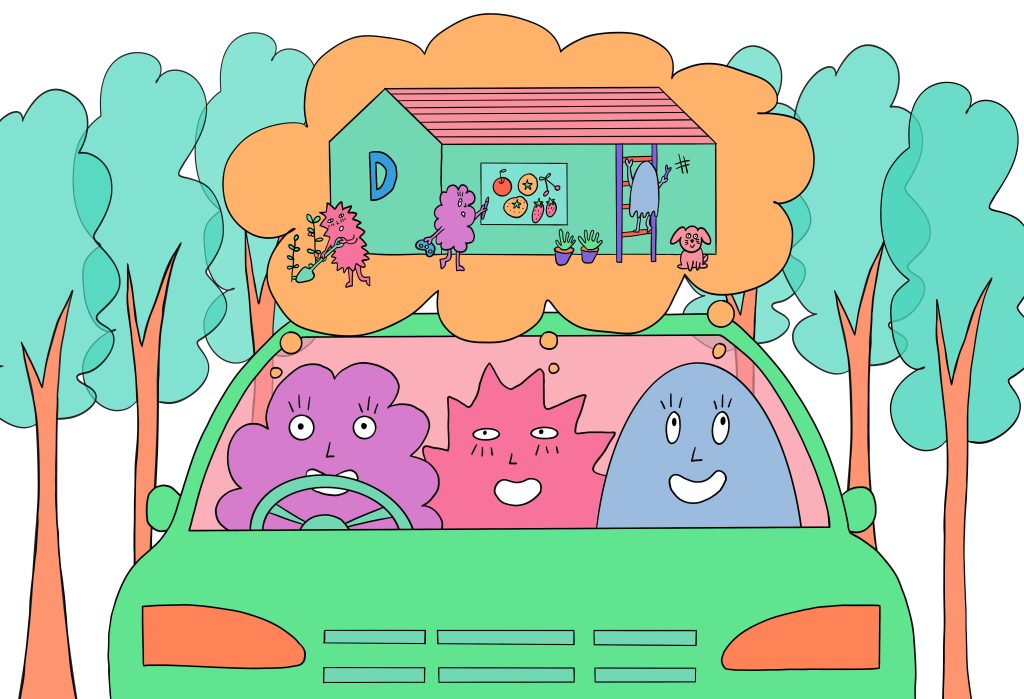
In fact, what other purpose are DAOs supposed to have, other than introducing and facilitating different, more aligned vehicles that better represent the dreams of the collective?
Michelle Huang is an experience architect at DAL. She is creative technologist and founder of Akiya Collective. (michellehuang42@gmail.com)
Illustration: Asuka Zoe Hayashi
Edits: Janine Liberty & Joseph Park

